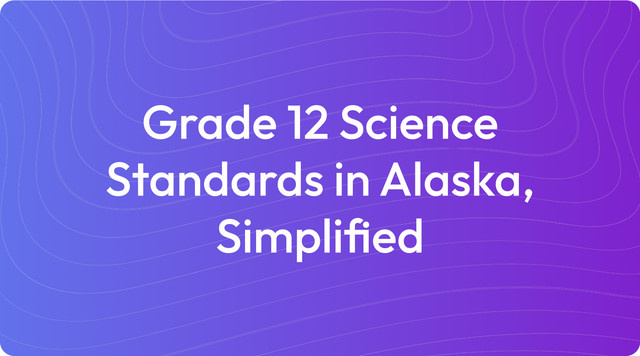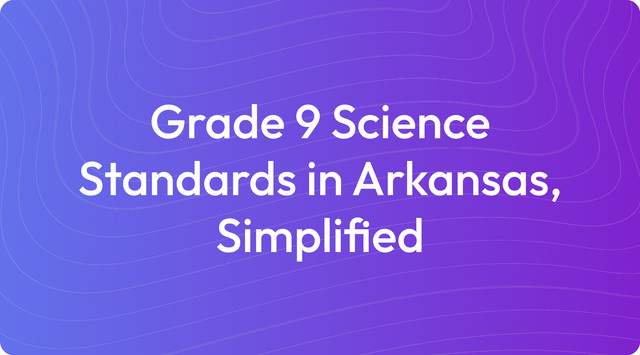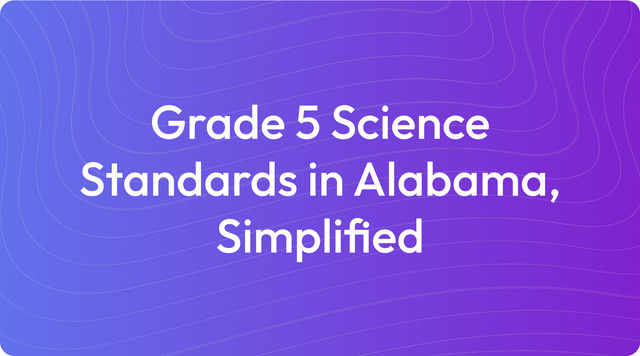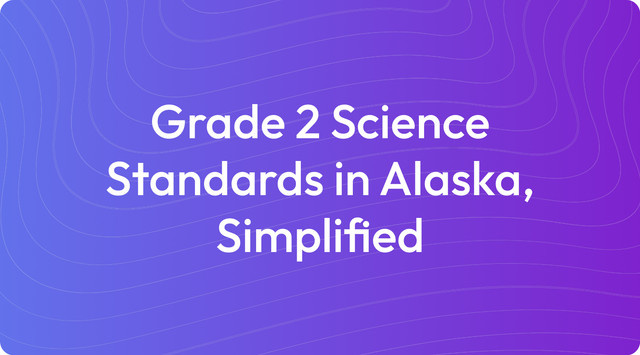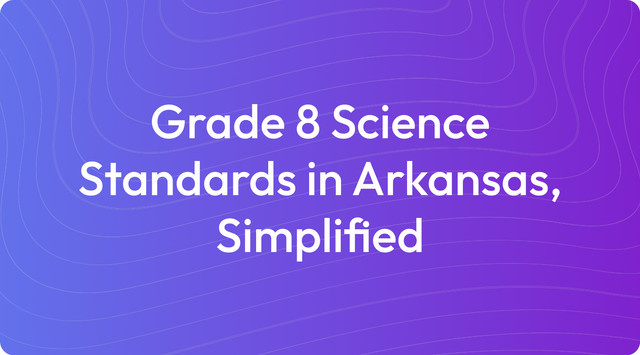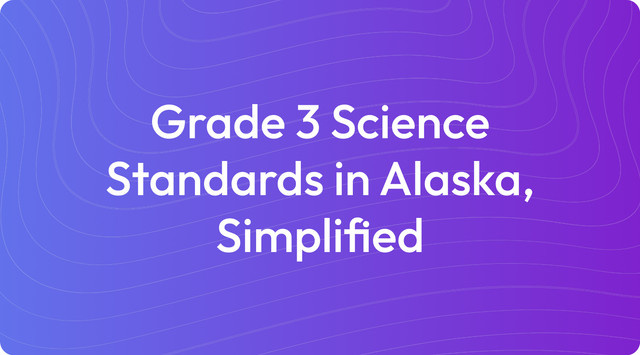Grade 10 Science Standards in Alabama, Simplified
Grade 10 science in Alabama highlights biology, genetics, evolution, and ecosystems. Find simple standards—read more on TeachShare!
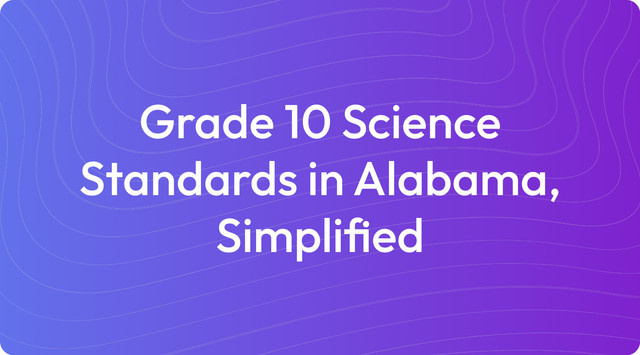
Understanding education standards is a key part of a teacher's work. We know it can sometimes feel like one more thing on your plate. Our goal is to offer clear information about what standards are and how they apply to your classroom, so you can feel confident in your planning.
Education standards are a set of learning goals that define what students should know and be able to do at each grade level. For teachers, this means you can expect a framework that provides benchmarks for student progress without dictating how you should teach. For instance, Alabama's Grade 10 science standards outline specific skills like analyzing data on genetic patterns and designing solutions for environmental issues, giving you a clear focus for your lesson plans.
What Are Grade 10 Science Standards in Alabama?
The Grade 10 Science Standards for Alabama center on Biology, creating a solid foundation in the life sciences. These standards are designed to foster scientific inquiry and critical thinking through real-world applications, helping prepare students for future STEM opportunities. The standards are organized into the following key areas:
Key Areas of Grade 10 Science Standards in Alabama
1. Cells and Cellular Processes
- Standard 1: Develop and use models to explain the function of cellular structures and organelles, including the cell membrane, nucleus, and mitochondria.
- Standard 2: Analyze data to explain how cellular processes, like photosynthesis and cellular respiration, transform energy for life.
2. Genetics and Heredity
- Standard 3: Use models to explain how DNA determines the structure of proteins and how this relates to traits in organisms.
- Standard 4: Analyze patterns of inheritance, including dominant and recessive traits, codominance, and sex-linked traits.
3. Evolution and Natural Selection
- Standard 5: Construct explanations based on evidence for how natural selection leads to adaptations in populations over time.
- Standard 6: Analyze data to explore how fossil records, DNA, and anatomical evidence support the theory of evolution.
4. Ecosystems and Interdependence
- Standard 7: Develop models to describe the cycling of matter (e.g., carbon, nitrogen) and flow of energy in ecosystems.
- Standard 8: Analyze how changes in ecosystems, including human activities, impact populations and biodiversity.
5. Biotechnology and Human Impact
- Standard 9: Evaluate the impacts of biotechnology on society, including genetic engineering and cloning.
- Standard 10: Design and evaluate solutions to reduce human impact on the environment and promote sustainability.
Key Learning Goals for Grade 10 Science in Alabama
- Model and Explain: Students use models to explore cellular processes, DNA, inheritance, and ecosystems.
- Analyze Data: Students analyze data to interpret genetic patterns, study evolution, and evaluate ecosystem changes.
- Problem-Solving: Students propose solutions to environmental challenges and evaluate the role of biotechnology in society.
The framework for these standards is guided by information from the Next Generation Science Standards and the Alabama State Department of Education.
Key Tested Standards
Based on the Alabama Course of Study: Science (2015), the Grade 10 standards focus on Biology. The key tested standards assess student understanding across cellular processes, genetics, ecosystems, evolution, and biotechnology. Below are the key tested standards for Grade 10 Science.
Key Tested Standards for Grade 10 Science in Alabama
1. Cells and Cellular Processes
- Standard 1: Develop and use models to explain the function of cellular structures and organelles (e.g., cell membrane, nucleus, mitochondria).
Why It’s Key: Understanding cell structure and function is foundational for biology and helps explain how organisms maintain homeostasis. - Standard 2: Analyze data to explain how cellular processes, such as photosynthesis and cellular respiration, transform energy for life.
Why It’s Key: Students explore how energy flows through living systems and how plants and animals depend on these processes for survival.
2. Genetics and Heredity
- Standard 3: Use models to explain how DNA determines the structure of proteins and how this relates to traits in organisms.
Why It’s Key: This standard connects molecular biology to genetics, helping students understand how traits are inherited. - Standard 4: Analyze patterns of inheritance, including dominant and recessive traits, codominance, and sex-linked traits.
Why It’s Key: Students learn how to predict genetic outcomes using Punnett squares and understand the basics of heredity.
3. Evolution and Natural Selection
- Standard 5: Construct explanations based on evidence for how natural selection leads to adaptations in populations over time.
Why It’s Key: Understanding natural selection helps students explain how populations evolve and adapt to environmental changes. - Standard 6: Analyze data to explore how fossil records, DNA, and anatomical evidence support the theory of evolution.
Why It’s Key: This standard introduces students to evidence-based reasoning and how multiple lines of evidence support evolution.
4. Ecosystems and Interdependence
- Standard 7: Develop models to describe the cycling of matter (e.g., carbon, nitrogen) and flow of energy in ecosystems.
Why It’s Key: This standard helps students understand how ecosystems function and how energy and matter move through the environment. - Standard 8: Analyze how changes in ecosystems, including human activities, impact populations and biodiversity.
Why It’s Key: Students explore the effects of human activities (e.g., deforestation, pollution) on ecosystems and biodiversity.
5. Biotechnology and Human Impact
- Standard 9: Evaluate the impacts of biotechnology on society, including genetic engineering and cloning.
Why It’s Key: Students learn to analyze the benefits and ethical concerns of modern scientific advances in genetics. - Standard 10: Design and evaluate solutions to reduce human impact on the environment and promote sustainability.
Why It’s Key: This standard encourages students to apply their knowledge to solve real-world environmental challenges.
Why These Standards Are Key for Testing:
- Analyze Data: For example, interpreting graphs of genetic inheritance, cellular energy, or biodiversity.
- Develop and Use Models: For example, creating models of cells, DNA, or nutrient cycles to explain biological processes.
- Construct Explanations: Using evidence to explain natural selection, cellular processes, or ecosystem dynamics.
- Solve Real-World Problems: Designing solutions to reduce human impact or evaluating the benefits and risks of biotechnology.
This information is based on guidelines from the Next Generation Science Standards and the Alabama State Department of Education.
Example Learning Objectives for Unit Planning
Learning objectives are clear, specific statements that outline what students should be able to do by the end of a lesson or unit. They act as a roadmap for both you and your students, making the learning goals transparent and measurable. This clarity helps focus your instruction and allows students to track their own progress.
To help with your planning, here are examples of learning objectives for two key Grade 10 Science standards, written in student-friendly language that aligns with the Alabama Course of Study:
Standard 2: Analyze data to explain how cellular processes, such as photosynthesis and cellular respiration, transform energy for life.
Learning Objectives:
- I can explain how plants use sunlight, water, and carbon dioxide to create food and release oxygen during photosynthesis.
- I can describe how cellular respiration breaks down glucose to release energy for cells to use.
- I can compare and contrast photosynthesis and cellular respiration by identifying their inputs and outputs.
- I can analyze data from graphs or experiments to describe how factors like light or carbon dioxide levels affect photosynthesis.
Standard 4: Analyze patterns of inheritance, including dominant and recessive traits, codominance, and sex-linked traits.
Learning Objectives:
- I can explain the difference between dominant and recessive traits and how they are passed down.
- I can use Punnett squares to predict the probability of specific traits in offspring.
- I can describe examples of codominance and incomplete dominance in genetic inheritance.
- I can analyze pedigrees to predict how traits, including sex-linked traits like colorblindness, are inherited.
Key Changes & Updates
The latest updates to the Grade 10 Science Standards, based on the Alabama Course of Study: Science (2015), shift the focus toward more active and applied learning in Biology. The changes encourage you to guide students through hands-on investigations, data analysis, and model-building. There is a strong connection to real-world issues, asking students to consider topics like genetic engineering and sustainability. The standards also incorporate engineering design practices, where students can develop and test solutions for environmental problems. This approach helps make science concepts more concrete and relevant to students' lives.
In terms of content, the standards call for a deeper exploration of key biological areas. Students will look more closely at genetics and biotechnology, including DNA structure and its applications, and expand their study of ecosystems and human impact. The curriculum also reinforces the use of evidence—such as fossil records and DNA comparisons—to understand evolution and natural selection. These updates are supported by cross-disciplinary connections, integrating math for analyzing data and literacy for constructing scientific arguments. The goal is to build strong critical thinking skills and better prepare students for advanced science courses and careers in STEM fields.
Create with TeachShare
We understand that keeping up with standards while creating engaging lessons is a lot to manage. Our platform is designed to help you build high-quality, standards-aligned resources quickly, so you can focus more on your students. Start creating standards-aligned instructional resources with TeachShare now.
Frequently Asked Questions
1. What are the main topics covered in Grade 10 Science in Alabama?
Grade 10 Science is centered on Biology. Here are the key areas of study:
- Cells and Cellular Processes: The structure and function of cells, including processes like photosynthesis and cellular respiration.
- Genetics and Heredity: How DNA works, how proteins are made, and the ways traits are passed down through generations.
- Evolution and Natural Selection: The mechanisms of natural selection and the evidence for evolution found in fossils, DNA, and anatomy.
- Ecosystems and Environmental Science: The flow of energy and matter in ecosystems and the effects of human activity on biodiversity.
- Biotechnology and Sustainability: The societal effects of biotechnology and ways to reduce human environmental impact.
2. What is the focus of the Alabama science standards?
The Alabama Course of Study: Science (2015) moves learning beyond memorization. The focus is on:
- Hands-On Learning: Encouraging students to conduct experiments, build models, and work directly with data.
- Real-World Applications: Connecting scientific concepts to current issues like climate change and biotechnology.
- Engineering Integration: Asking students to design and test solutions for biological and environmental challenges.
- Critical Thinking: Guiding students to analyze information, find patterns, and build explanations based on evidence.
3. What are some examples of activities that align with the standards?
You can bring the standards to life with practical activities. Here are a few ideas:
- Photosynthesis: Have students design an experiment to see how light intensity impacts the rate of photosynthesis.
- Inheritance: Use Punnett squares to help students predict the probability of offspring inheriting specific traits.
- Natural Selection: Analyze a case study, such as the peppered moth, to explain how species adapt to their environment.
- Ecosystems: Ask students to build food webs to illustrate energy flow or model the carbon cycle.
- Biotechnology: Host a debate on the ethics of genetic engineering or have students research the benefits of CRISPR.
4. How do these standards connect to real-world applications?
These standards are designed to help students understand and think critically about complex, real-world challenges. They show students:
- How energy moves through all living systems
- How genetic diversity and environmental factors influence populations
- How modern biotechnology affects society and the environment
- How human activities impact ecosystems and what can be done to find solutions
5. How can teachers make Grade 10 Science more engaging?
To keep students interested and involved, you can try a few different approaches. Here are some strategies that work well:
- Use real-world examples that connect to students' lives, like discussing how genetic engineering affects the food they eat.
- Incorporate hands-on activities such as building DNA models or conducting experiments on ecosystem dynamics.
- Encourage collaborative problem-solving through group projects aimed at finding solutions for pollution or biodiversity loss.
- Use technology like virtual labs and data-visualization tools to make abstract ideas more concrete and understandable.
Answer


